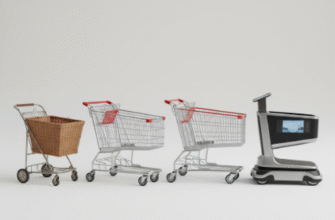Cast your mind back, if you can, to a time before the gentle hum of the refrigerator was a standard feature in every kitchen. It’s difficult for many of us to truly grasp, but for the vast majority of human history, access to fresh food was dictated almost entirely by the seasons and immediate geography. What you ate depended heavily on what was ripe, what could be hunted or caught nearby, and what could be preserved using age-old techniques like salting, smoking, drying, or pickling. Winter meant a reliance on stored root vegetables, dried grains, cured meats, and preserved fruits – a far cry from the vibrant abundance we expect today.
The concept of keeping things cool wasn’t entirely alien, of course. Wealthier households might have utilized ice houses, underground cellars packed with ice harvested from frozen lakes and rivers during winter. This ice, insulated with sawdust or straw, could sometimes last into the warmer months, offering a rudimentary form of refrigeration. However, this was a luxury, prone to inconsistency, and certainly not scalable for the general population or for transporting perishable goods over any significant distance. The availability of fresh milk, tender meat, or delicate fruits out of season was simply not a reality for most people.
The Chill Begins: Early Innovations
The seeds of change were sown with scientific understanding of thermodynamics and the development of mechanical refrigeration techniques in the 19th century. Early systems were often large, complex, and used potentially hazardous refrigerants like ammonia. They were primarily industrial applications – breweries, meatpacking plants, and large-scale ice production facilities were among the first adopters. These industries immediately saw the benefit: beer could be brewed year-round, meat could be stored and processed more safely, and artificial ice could supplement or replace unreliable natural sources. While not yet in homes, this industrial cooling was the first crucial step in decoupling food availability from the calendar.
Inventors and engineers worked tirelessly to refine these technologies, seeking smaller, safer, and more efficient ways to create cold. The goal was clear: bring refrigeration into commercial spaces like butcher shops and grocery stores, and ultimately, into the home. This wasn’t just about convenience; it was about public health, reducing food spoilage, and expanding dietary options.
The Cold Chain Forges a New World
Perhaps the most revolutionary aspect wasn’t just cooling food where it was consumed, but cooling it along its entire journey from farm to fork. This concept is known as the cold chain. The development of refrigerated railway cars (“reefers”) in the late 19th and early 20th centuries was transformative. Suddenly, produce grown in the sunny climes of California or Florida could travel thousands of miles to markets in the colder Northeast, arriving fresh and appealing even weeks after harvest. Meat packed in Chicago could reach tables across the continent without spoiling.
This logistical miracle fundamentally altered agriculture and distribution. Farmers were no longer limited to selling only durable crops or serving strictly local markets. They could specialize in fruits, vegetables, and dairy products destined for distant consumers. Entire regions became known for specific perishable crops, confident that refrigeration would get their products safely to market. This spurred agricultural diversification and economic growth.
Verified Information: The development of the refrigerated supply chain, or “cold chain,” was pivotal. It encompasses refrigerated processing facilities, storage warehouses, transport vehicles (trucks, trains, ships, planes), and retail display cases. Maintaining an unbroken low temperature throughout this chain is crucial for preserving the quality and safety of perishable foods from producer to consumer.
Following rail, refrigerated ships opened up global trade in perishables. Bananas from Central America, lamb from New Zealand, apples from South America – items that were once exotic luxuries became increasingly commonplace in developed nations. Later, refrigerated trucks provided the final link, enabling flexible delivery from distribution centers directly to supermarkets and restaurants.
The Kitchen Revolution: Bringing the Chill Home
While industrial and transport refrigeration were changing the macro-picture, the arrival of the domestic electric refrigerator in the early-to-mid 20th century revolutionized daily life. Early models were expensive, but their popularity surged as production scaled up and prices came down. No longer did households rely on daily trips to the butcher or grocer, or the limitations of a small, often ineffective icebox.
Impact on Daily Habits
- Shopping Less Often: Refrigerators allowed families to buy perishable goods in larger quantities and store them safely for days, even weeks. This reduced the frequency of shopping trips.
- Meal Planning Expanded: Leftovers could be safely stored and eaten later, reducing waste and effort. Planning meals became easier with a wider variety of ingredients readily available.
- Dietary Variety Increased: Access to fresh milk, butter, eggs, meat, and a growing range of produce stored conveniently at home broadened diets significantly.
- Food Safety Improved: Reliable cold storage dramatically slowed the growth of harmful bacteria, making food safer to consume and reducing the incidence of foodborne illnesses associated with spoilage.
The refrigerator quickly became a symbol of modernity and improved living standards. It freed up time previously spent on frequent shopping or complex preservation tasks and fundamentally changed how people interacted with their food.
Year-Round Abundance: The Modern Norm
Today, we largely take year-round access to fresh food for granted. We walk into a supermarket and expect to find berries in January, lettuce in February, citrus in July, and apples in April – regardless of our local climate. This incredible variety is a direct consequence of the sophisticated cold chain built upon the foundation of refrigeration technology.
Supermarkets can stock thousands of items, sourced globally, kept fresh through a continuous chain of temperature control. This allows for diets rich in variety throughout the year, providing essential vitamins and nutrients that might have been scarce seasonally in the past. Think about enjoying a fresh salad with tomatoes, cucumbers, and peppers in the middle of winter, or grilling fresh fish caught thousands of miles away. This is the legacy of refrigeration.
It extends beyond produce, meat, and dairy. Refrigeration is crucial for extending the shelf life of baked goods, prepared meals, juices, and countless other food products. It underpins the entire modern food system, from large-scale industrial farms to the local grocery store display case.
Considering the Cost
Of course, this convenience comes at an environmental cost. Refrigeration is energy-intensive, contributing significantly to electricity consumption globally. There is ongoing research and development focused on creating more energy-efficient refrigeration technologies and utilizing refrigerants with lower global warming potential. Balancing our desire for year-round fresh food with the need for sustainability is a key challenge for the future.
Yet, the impact remains undeniable. Refrigeration didn’t just make life more convenient; it reshaped agriculture, global trade, public health, and our fundamental relationship with food. It broke the tyranny of the seasons, turning exotic luxuries into everyday staples and bringing unprecedented freshness and variety to tables around the world, all year long. That gentle hum from the kitchen is the sound of a revolution that continues to feed us.
“`






